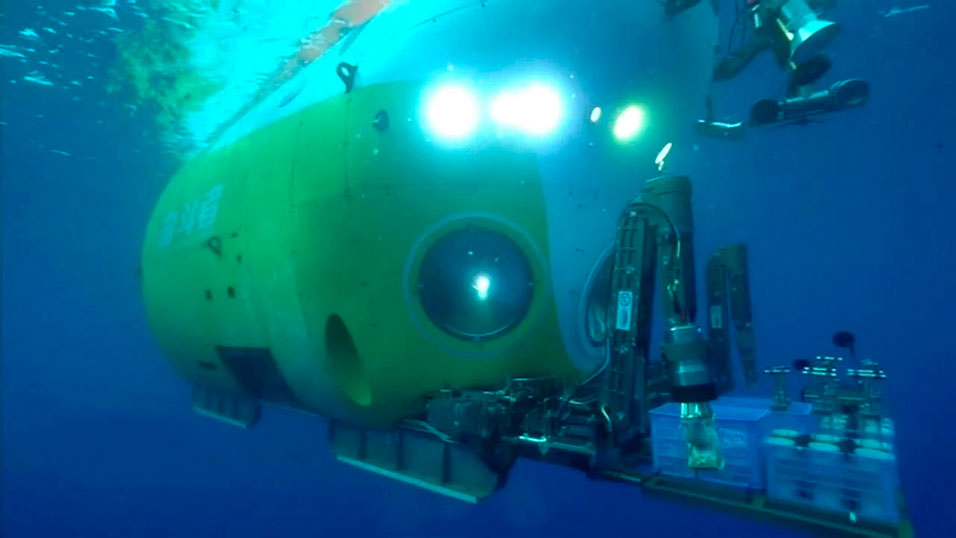BEIJING (AFP).- China livestreamed footage of its new manned submersible parked at the bottom of the Mariana Trench on Friday, part of a historic mission into the deepest underwater valley on the planet.
The "Fendouzhe", or "Striver", descended more than 10,000 metres (about 33,000 feet) into the submarine trench in the western Pacific Ocean with three researchers on board, state broadcaster CCTV said.
Only a handful of people have ever visited the bottom of the Mariana Trench, a crescent-shaped depression in the Earth's crust that is deeper than Mount Everest is high and more than 2,550 kilometres (1,600 miles) long.
The first explorers visited the trench in 1960 on a brief expedition, after which there had been no missions until Hollywood director James Cameron made the first solo trip to the bottom in 2012.
Cameron described a "desolate" and "alien" environment.
Video footage shot and relayed by a deep-sea camera this week showed the green-and-white Chinese submersible moving through dark water surrounded by clouds of sediment as it slowly touched down on the seabed.
Fendouzhe, which has made multiple dives in recent days, had earlier this month set a national record of 10,909 metres for manned deep-sea diving after landing in the deepest known point of the trench, Challenger Deep, just shy of the 10,927-metre world record set by an American explorer in 2019.
The mission on November 10 beamed up the world's first live video from Challenger Deep.
Deep sea resources
The submersible, equipped with robotic arms to collect biological samples and sonar "eyes" that use sound waves to identify surrounding objects, is making repeated dives to test its capabilities.
It is carrying so much equipment that engineers added a bulbous forehead-shaped protrusion containing buoyant materials to the vessel to help maintain its balance.
Fendouzhe, China's third deep-sea manned submersible, is observing "the many species and the distribution of living things on the seabed", scientists on board told CCTV.
The water pressure at the bottom of the trench is a crushing eight tons per square inch, around a thousand times the atmospheric pressure at sea level, yet scientists have found the dark, frigid waters of the trench to be teeming with life.
The Chinese researchers will collect specimens for their work, CCTV said.
Previous studies have found thriving communities of single-cell organisms surviving on organic waste that had settled on the ocean floor, but very few large animals.
The mission will also conduct research on "deep-sea materials," CCTV said, as China pushes ahead in deep-sea mining.
Beijing this month set up a joint training and research centre with the International Seabed Authority, which will train professionals on deep-sea technology as well as conducting research on mining for valuable minerals at the bottom of the ocean.
Fendouzhe is expected to set standards for China's future deep-sea vessels.
"It takes more than two trials before we can call it a real success," Zhu Min, a researcher at the Chinese Academy of Sciences involved in the mission, told CCTV on Tuesday.
© Agence France-Presse










